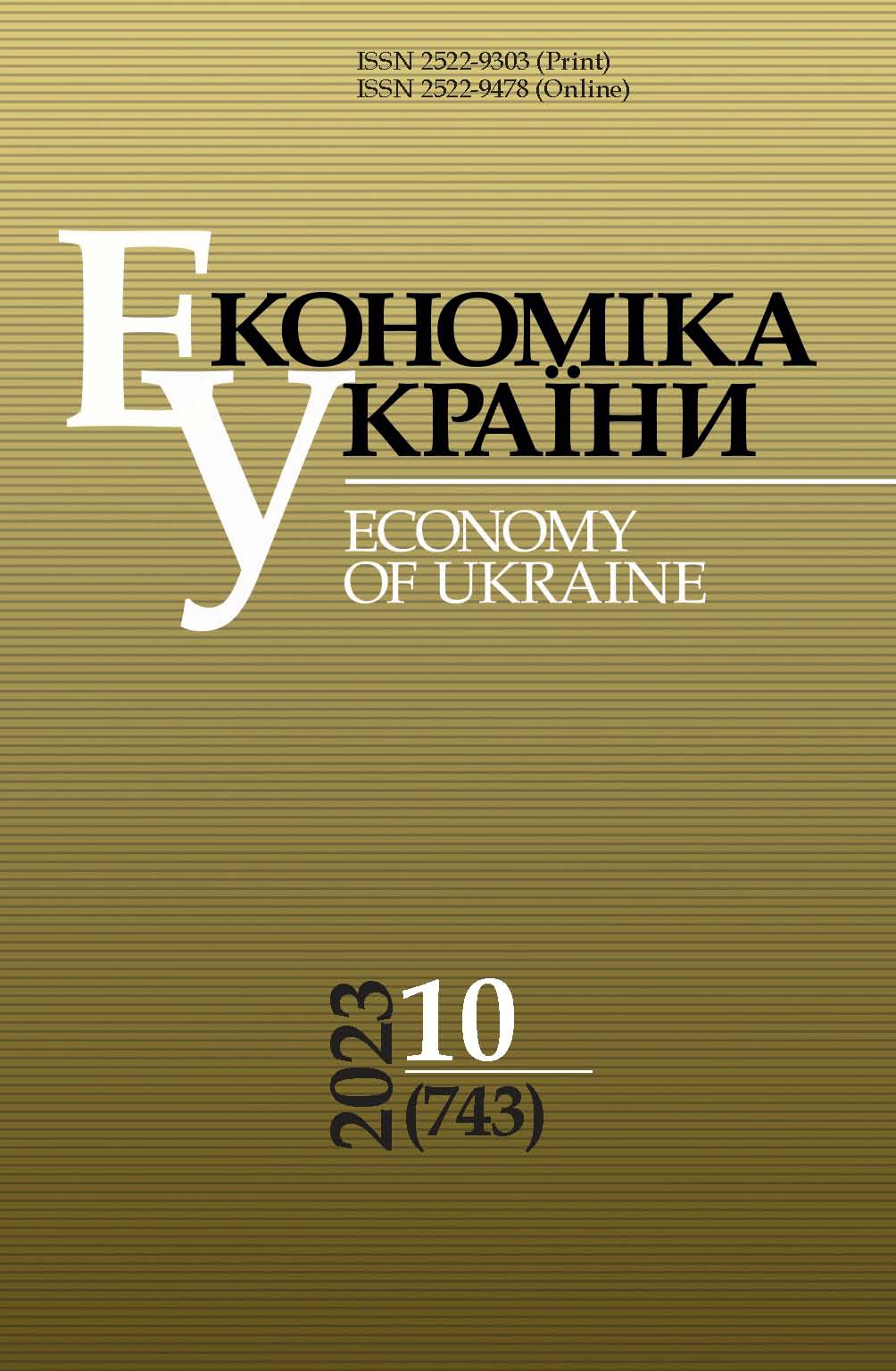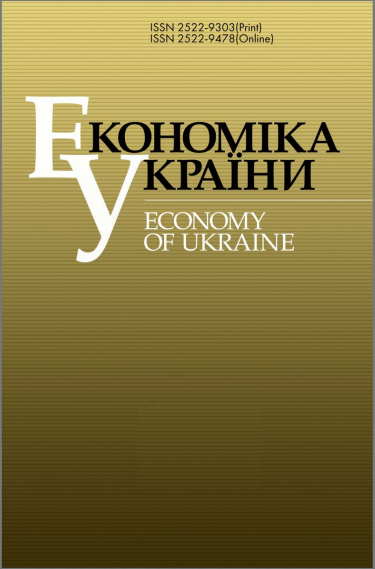INNOVATION COMMUNITIES AND THEIR CAPABILITIES IN REVITALIZING WAR-AFFECTED UKRAINIAN TERRITORIES ON THE PRINCIPLES OF RESILIENCE AND SUSTAINABILITY
DOI:
https://doi.org/10.15407/economyukr.2023.10.003Keywords:
community; innovation community; war-affected Ukrainian territories; build back better principle; innovations; resilience; sustainabilityAbstract
The understanding of the nature of communities has been deepened, and various criteria to define them have been used to this end, in particular geographic, professional, social-problem, environmental-problem, cultural-ethnic. It is determined that one of the types of communities are innovation communities - groups of people who direct their activities to obtain innovative results in a common environment, who are able to influence the solution of significant socio-economic and environmental problems of society. Based on systematization of the scientific and theoretical basis for identifying the phenomenon of innovation communities, their essential characteristics and advantages for the development of territorial communities are determined.
Innovation communities are sources of progressive social transformations, as they are aimed at resilient and sustainable development of territories. The role and capabilities of innovation communities in revitalizing war-affected Ukrainian territories on the build back better principle are substantiated. The essence of this principle is revealed, which consists in the recovery rehabilitation and reconstruction of various societal spheres after disasters and calamities, not simply to the previous (in the case of Ukraine – pre-war) state, but with the introduction of qualitatively new changes and improvements. The conformity of the implementation of this principle with the national interests of Ukraine is emphasized. The need to ensure the evolution of territorial communities and their population from a mostly passive observer and consumer to an active participant in the revitalization of settlements on the principles of resilience and sustainability has been determined. This requires the introduction of openness in public administration and partnership relations of local authorities with the local population, development of public awareness and activity, encouragement of entrepreneurship, social and environmental local initiatives, dissemination of successful innovative practices and a sustainable lifestyle.
References
Pidorycheva I.Yu. Innovations in ensuring sustainable development at the local level. In: Innovations and technology transfer: methods, models and management mechanisms. V.A. Omelyanenko (Ed.). Sumy, 2023, pp. 194-208 [in Ukrainian].
Agarwal N., Brem A., Dwivedi S. Frugal and reverse innovation for harnessing the business potential of emerging markets - the case of a Danish MNC. International Journal of Innovation Management, 2020, Vol. 24, No. 01, 2050009.
doi.org/10.1142/S1363919620500097
Barnikol J., Liefner I. The prospects of advanced frugal innovations in different economies. Technology in Society, 2022, Vol. 71, 102081.
doi.org/10.1016/j.techsoc.2022.102081
Hossain M. Frugal innovation: Unveiling the uncomfortable reality. Technology in Society, 2021, Vol. 67, 101759.
doi.org/10.1016/j.techsoc.2021.101759
Bhattacharjya B.R., Bhaduri S., Kakoty S.K. Co-creating community-led frugal innovation: An adapted Quadruple Helix? Technovation, 2023, Vol. 124, 102752.
doi.org/10.1016/j.technovation.2023.102752
Mattioli M. Communities of Innovation. Northwestern University Law Review, 2012, Vol. 106, No. 1, pp. 103-155. URL: scholarlycommons.law.northwestern.edu/cgi/viewcontent.cgi?article=1136&context=nulr
Chavis D.M., Lee K. What is Community Anyway? Stanford Social Innovation Review, 2015, May 12.
West R.E. Communities of innovation: Individual, group, and organizational characteristics leading to greater potential for innovation. TechTrends, 2014, Vol. 58 (5), pp. 53-61.
doi.org/10.1007/s11528-014-0786-x
Omelianenko O.M. Analysis of Scientific and Methodological Approaches to and Concepts of Innovation Communities. The Problems of Economy, 2022, No. 1 (51), pp. 99-104. [in Ukrainian].
doi.org/10.32983/2222-0712-2022-1-99-104
Lim M., Bee Yong Ong. Communities of innovation. International Journal of Innovation Science, 2019, Vol. 11, No. 3, pp. 402-418.
doi.org/10.1108/IJIS-09-2017-0086
Grippa F. Nurturing communities of innovation: Evidence from the aerospace industry. International Journal of Innovation and Technology Management, 2012, Vol. 09, No. 04, 1250029.
doi.org/10.1142/S0219877012500290
González-Sanguino C., Ausín B., Castellanos M.Á., Saiz J., López-Gómez A., Ugidos C., Muñoz M. Mental health consequences of the Covid-19 outbreak in Spain. A longitudinal study of the alarm situation and return to the new normality. Progress in Neuro-Psychopharmacology and Biological Psychiatry, 2021, Vol. 107, 110219.
doi.org/10.1016/j.pnpbp.2020.110219
Orelj A., Torfason M.T. They didn't ask: Online innovation communities as a latent dynamic capability. Technological Forecasting and Social Change, 2022, Vol. 180, 121738.
doi.org/10.1016/j.techfore.2022.121738
Grosse M., Pohlisch J., Korbel J.J. Triggers of Collaborative Innovation in Online User Communities. Journal of Open Innovation: Technology, Market, and Complexity, 2018, Vol. 4, Iss. 4.
doi.org/10.3390/joitmc4040059
Downloads
Published
How to Cite
Issue
Section
License
Copyright (c) 2023 Publisher PH "Academperiodyka" of the NAS of Ukraine

This work is licensed under a Creative Commons Attribution-NonCommercial-NoDerivatives 4.0 International License.



